Search
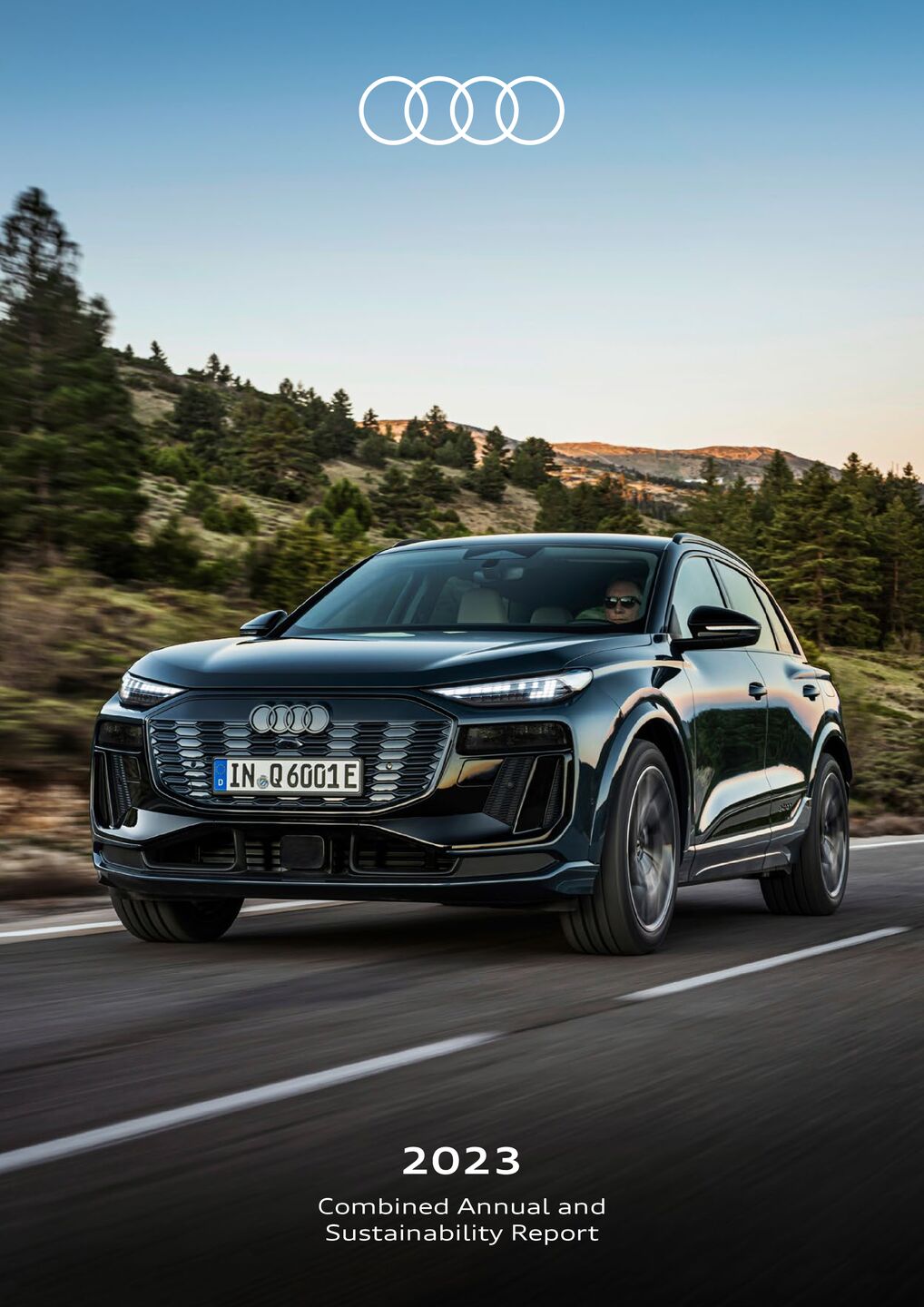 2023: Combined Annual and Sustainability Report
2023: Combined Annual and Sustainability Report
E³ 1.2 as the basis of a new digital experience Ph ot o: A U D I A G Strategy & Company Finance ESG Appendix 26 Audi Report 2023 In the field of lighting technology, the Four Rings are once again creating a milestone and thus strengthening the Audi DNA. The Audi Q6 e-tron is the first model to feature an active digital light signature. This gives the headlights and rear lights a lifelike appearance through movement. At the front end, the active digital light signature is created with 12 segments that dim up or down. At the rear, six OLED panels with a total of 360 segments generate a new image every 10 milli‑ seconds using a specially developed algorithm. Customers can choose from up to eight optional light signatures to customize the appearance of their Audi Q6 e-tron. This is possible via the MMI and, for the first time, via the myAudi app. The second generation of the innovative digital OLED technology not only shapes the look of the new Audi models, it also increases their range of functions many times over. This also improves road safety, as impressively demonstrated by the communication light in the digital OLED rear lights 2.0. The proximity indication function already familiar from other Audi models is being extended in the new Q6 e-tron to include the communication light. This light warns other road users of accidents and breakdowns ahead by Innovation in light technologies, new functions for driver assist systems Audi SQ6 e-tron: electric power consumption (combined) in kWh/100 km: 18.4–17.5; CO₂ emissions (combined) in g/km: 0; CO₂ class: A. 4 Assist systems can only assist the driver in the task of driving within the respective system limits. The driver is always responsible for driving the vehicle and is required to be attentive at all times. displaying in the digital OLED rear light – in addi‑ tion to the regular rear light graphic – a specific static taillight signature with integrated warning symbols in critical road situations.
 Audi Tradition - Anniversary Dates 2024
Audi Tradition - Anniversary Dates 2024
Although the main body was unchanged, the product was upgraded with newly designed bumpers, a new front apron, headlamp lenses that were bevelled towards the radiator grille, new indicator lights and tail lights. All models were given extra indicator lights on the side of the front fender. The side trims, door handles, external mirrors and bumpers were painted in the same colour as the car. The launch of the A6 series also heralded the end of the era of five-cylinder petrol engines. Only the five- cylinder turbo engine in the Audi S6 was retained in the range until production ended. One year after the market launch, the A6 was given newly developed, more powerful four and six-cylinder, five-valve engines with a variable-length intake manifold and, with the four-cylinder engine, variable camshaft adjustment. Almost 291,000 of the fourth C-series generation were made before the factory holidays in August 1997. Audi A6 Audi Tradition 8 Anniversary Dates 2024 At the Geneva Motor Show in March 1994, AUDI AG presented the Audi A8, its new model in the premium segment. By unveiling this car, Audi once again demonstrated the company’s capacity for innovation in the field of automotive engineering. After many years of development, it had managed to put the Audi A8 into production with a fully aluminium body. The body was based on the Audi Space Frame (ASF). This was a frame structure for the body on which individual extruded profiles were joined together by die-cast nodes. The engineers incorporated large, load-bearing aluminium panels into the bodywork cell that was created. Along with the welding and adhesive bonding technology, this was also the first time in automotive engineering that self-piercing rivets had been used as connecting elements. The Audi A8 was initially available in the quattro version with a 4.2-litre V8 engine that produced 220 kW/300 hp. Other units with six, eight and twelve cylinders were set to follow as petrol and diesel engines.
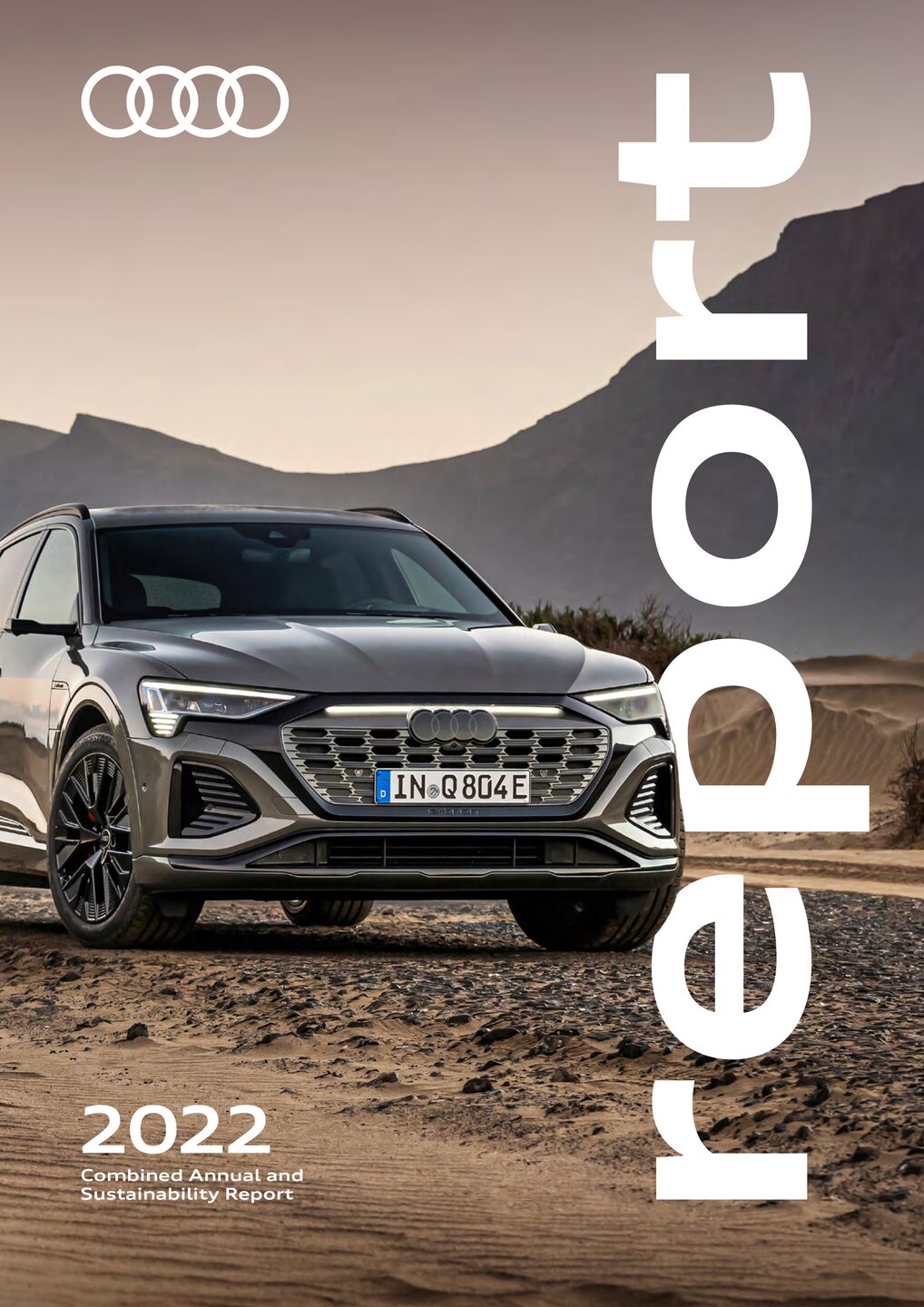 Audi Report 2022
Audi Report 2022
“The device marked a small but nevertheless important turning point because, in addition to entertainment, the Audi quattro now offered practical functions: the display of vehicle data, then later the integration of telephones, and finally navigation,” says historian Ralf Friese, explaining the interior design milestone set by the Audi quattro.¹ Audi’s aspiration at the time was to offer its customers sophisticated innovations, and the same is true today. The future is already the present A look at the past shows: the interior experience has always continued to evolve. More and more functions are now being added – for passengers as well. And the pace at which new innovations are being developed is increasing. The latest feature is holoride.² If desired, it transforms every ride in a wide range of Audi models into an action-packed experience for passengers. The beginnings of in-car entertainment go back such a long way that some of the audio carriers and players have almost disappeared by now. Ralf Friese, Audi historian, Audi Tradition Audi Urquattro:¹ It left its mark on the 1980s with its spectacular design. ¹ Vehicle is no longer offered for sale. ² To enjoy the holoride experience, passengers need the “Pioneers’ Pack” starter package and a holoride-capable Audi vehicle from the A4, A5, A6, A7, A8, Q5, Q7, Q8, Q8 e-tron model lines (electric power consumption (combined) in kWh/100 km: 24.4–20.1 (WLTP); CO₂ emissions (combined) in g/km: 0*), Audi e-tron, Audi e-tron Sportback and Audi e-tron GT quattro (fuel consumption (combined) in kWh/100 km: 21.6–19.6 (WLTP); CO₂ emissions (combined) in g/ km: 0*). The prerequisite is the 2023 model year and the third-generation modular infotainment matrix (MIB 3). * Information on fuel/electric power consumption and CO₂ emissions in ranges depends on the vehicle’s selected equipment.
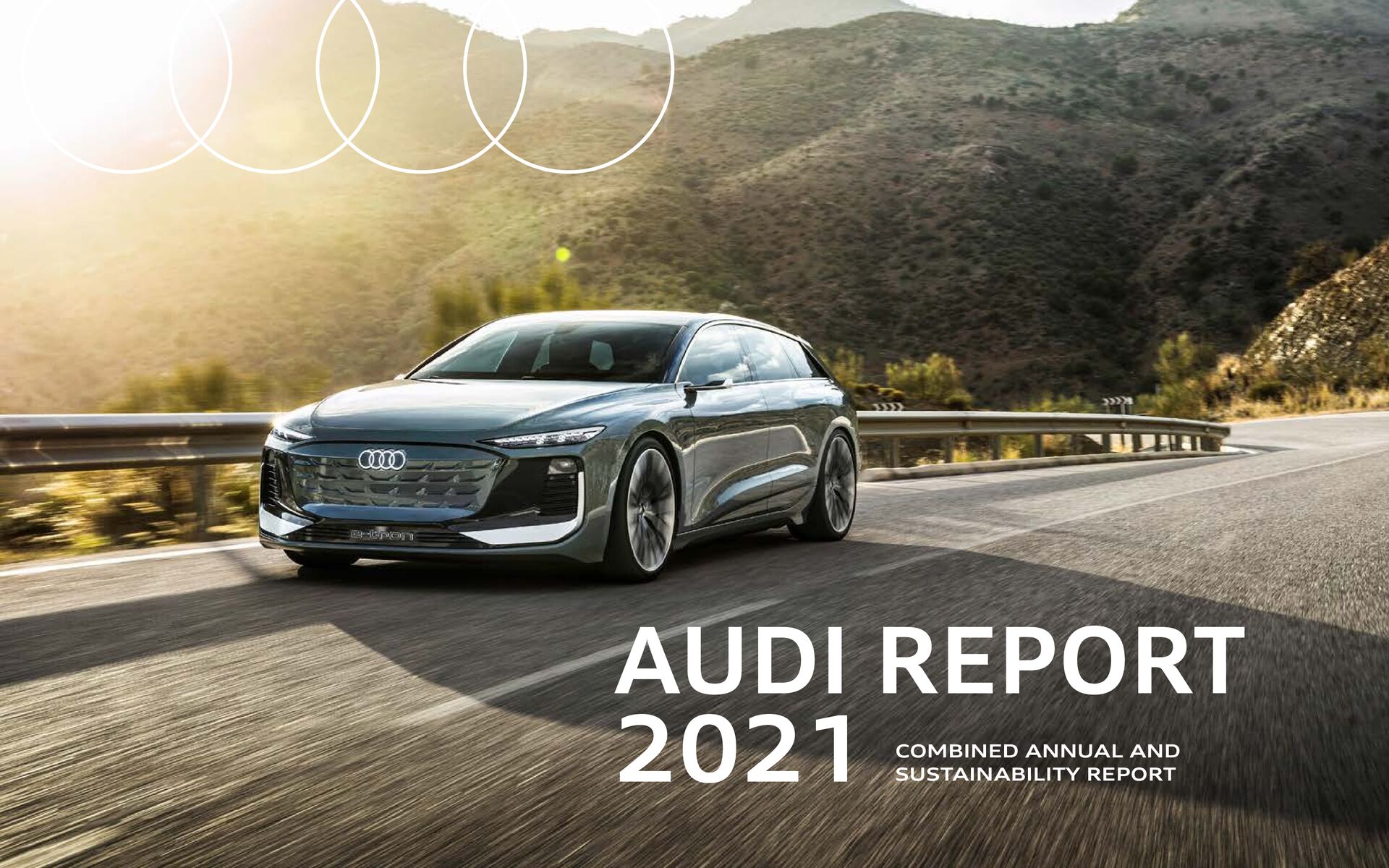 Audi Report 2021
Audi Report 2021
It is all about seeing and being seen: Next-generation digital matrix LED headlights can increase safety by means of projections – lane and orientation light – onto the road in front of the vehicle. In addition, the front headlights illuminate the road clearly and brightly. Intelligent lighting control reacts automatically to traffic situations, the weather and the surroundings. B e t t e r v i s i b i l i t y The Audi A6 Avant e-tron concept² uses projectors to act ively communicate with its surroundings and the dr iver. T h e r o a d b e c o m e s a s t a g e ² The vehicle mentioned and shown here is a concept vehicle that is not available as a series-production vehicle. The automated driving functions mentioned are technologies currently under development, are not available for series-production vehicles and work only within system limits. All possible uses of the technical systems and functions shown represent only a possible concept and are dependent on the respective legal regulations in the relevant country. Audi Report 2021 81 P h o to s: A U D I A G 82 S trateg y P ro d u cts & S ervices O p eratio n s & In teg rity V alu e C reatio n & P ro d u ctio n E m p lo yees & S o ciety A p p en d ix In tro d u ctio n The ultra-slim digital matrix LED headlights of the Audi A6 Avant e-tron concept² do more than simply cast bright light onto the road. Projectors are also located further below in the front of the vehicle: Suppose drivers parked next to a wall while the car is charging – they could keep themselves entertained by playing a built-in video game projected onto the wall. This video game was developed specially for the showcar and illustrates what digital features are conceivable in future Audi models. Beneath the headlights there are striking, low-set air inlets of an inverted U-shape to cool the drive, battery and brakes. Sl im headl ights, a c losed S ingleframe gr i l le : This Avant² is recognizable in a f lash as an electr ically powered Audi .
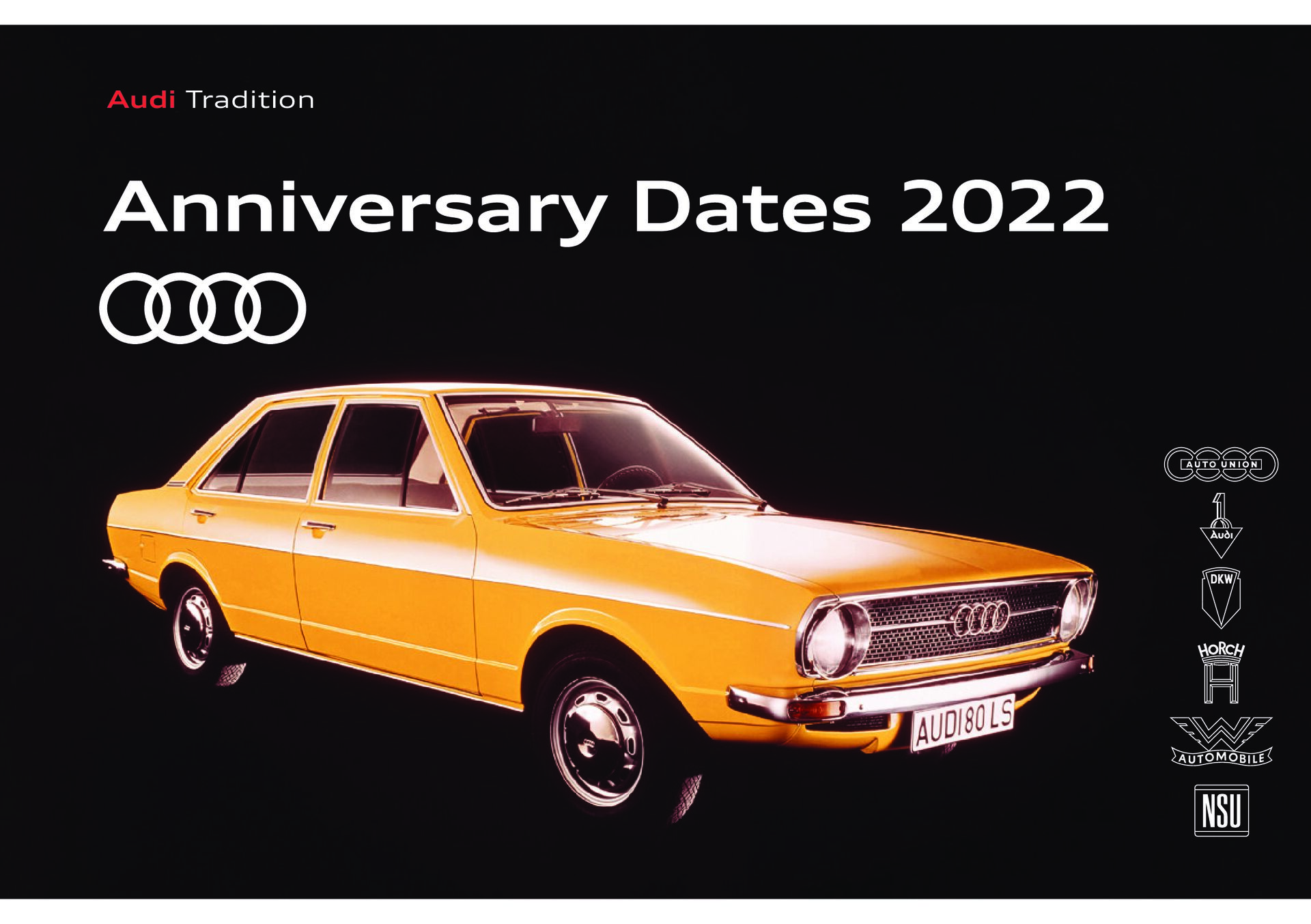 Anniversary Dates 2022
Anniversary Dates 2022
The fabric soft top with a plastic rear window could be rolled up forwards electrically; after detaching a bridge element between the rear lights, the rest of the tailgate could be lowered into the bumper by remote control, leaving clear access to a load platform measuring 160 x 95 cm. In contrast to the four-door prototype, the Al₂ open end version remained a unique specimen. Al and Audi A2 prototypes2 Audi Tradition 5 Anniversary Dates 2022 The Audi A4 saloon was launched on the market in November 1994. A year later there was also an estate version of the successor to the Audi 80. The fifth generation of the B-series was powered by four and six-cylinder petrol engines, along with the tried-andtested four-cylinder TDI. A sporty version in the style of the Audi S2 did not come along until autumn 1996. The top-of-the-range Audi S4 was finally available from September 1997. Equipped with a 195 kW/265 hp V6 biturbo five-valve engine, the saloon and Avant were only available with permanent all-wheel drive. Modified bumpers with enlarged air intakes and side skirts painted in the same colour as the car made what was the sportiest A4 to date stand out from its less powerful basic versions. Six-speed gearboxes, a sports chassis and 17'' wheels were all standard features. From September 1997 until production ended after the 2001 plant holidays, 3,939 S4 saloon cars and 10,156 S4 Avant rolled off the production line. Market launch of Audi S4 (B5) 25 years Audi Tradition 6 Anniversary Dates 2022 Audi presented the new A6 in March 1997 at the Geneva Motor Show. The saloon was available from dealers by May 1997, with the Avant appearing in March of the following year. The fifth generation of the C-series – the former Audi 100 – polarised opinion with its design, which represented a radical departure from the company’s previous standard line.
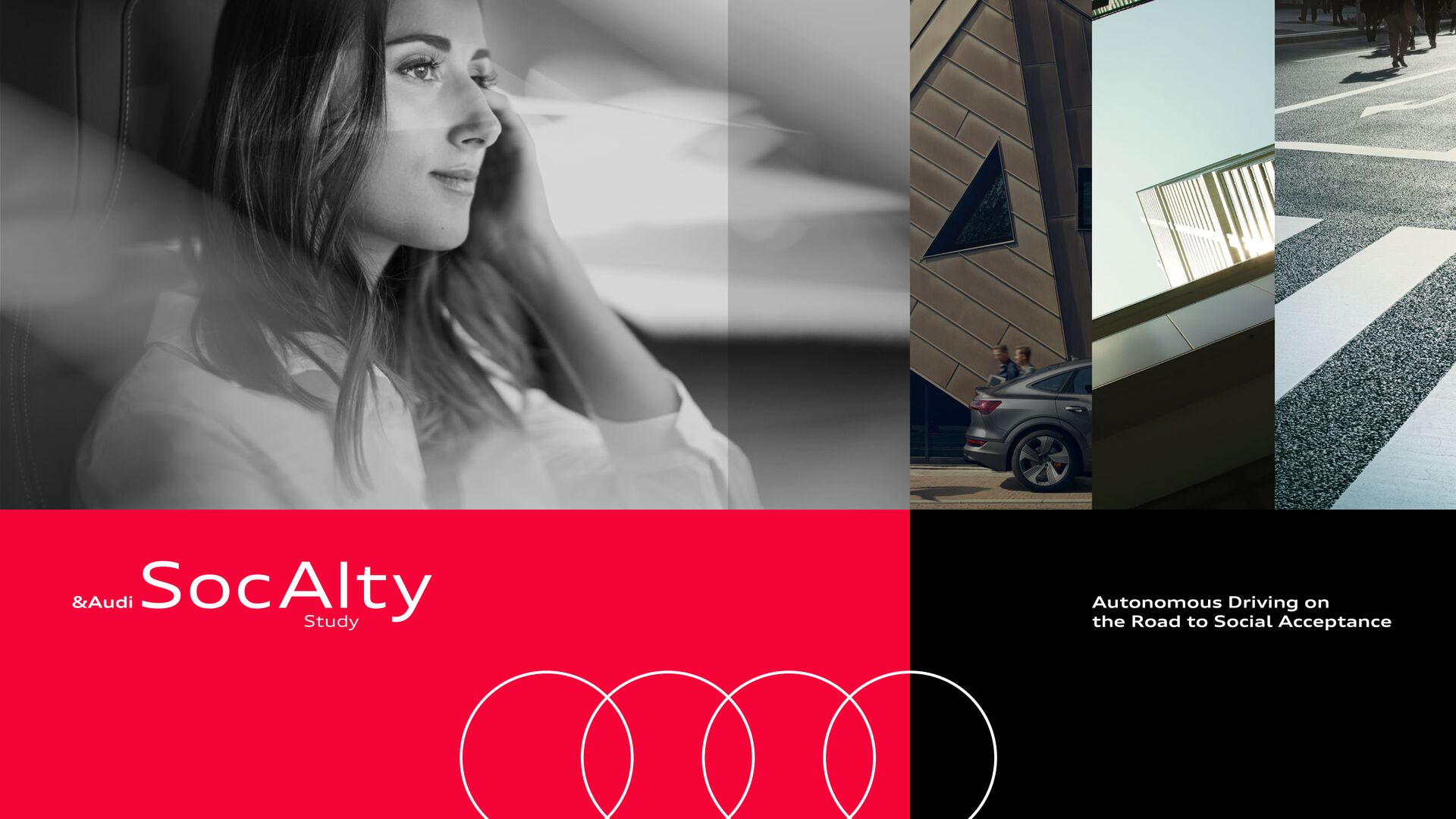 &Audi SocAIty study
&Audi SocAIty study
Experts from academia, business, associations and politics draw on their respective expertise to shed light on these issues, with the focus of the conversation falling on law, ethics and data protection. Saskia Lexen Project Manager, Initiative &Audi 3 4 The focus of the present study is on the core issues surrounding autonomous driving, both today and tomorrow. It considers where technology and society currently stand on the subject, what the near future of mobility with autonomous vehicles could look like and which issues and areas of activity are key steps on the road to an autonomous future. To this end, 19 international experts from the fields of law, ethics and data were interviewed and asked to give an understanding of their views. While local and professional differences did arise, on many points the results were unanimous. The consensus is that the time has come to move away from envisioning a future which bears little resemblance to reality and instead to work together on establishing a realistic vision of the near future. In order to do so, this study not only addresses the usual topics, such as the further development of key technologies and infrastructure, but also explores a new mindset in handling technological innovations. These experts showcase routes from their respective fields to discover more pragmatic solutions and promote greater collaboration and call for open and transparent communication with the public. As such, the study serves as a basis, food for thought if you like, for companies, policymakers, technology and mobility enthusiasts and other stakeholders invested in ensuring a safe, inclusive and environmentally friendly mobility transition. Executive Summary 5 1 Methodology & Background 6 Methodology & Background This study addresses the mobility of the future or, more precisely, the opportunities and challenges posed by autonomous driving.
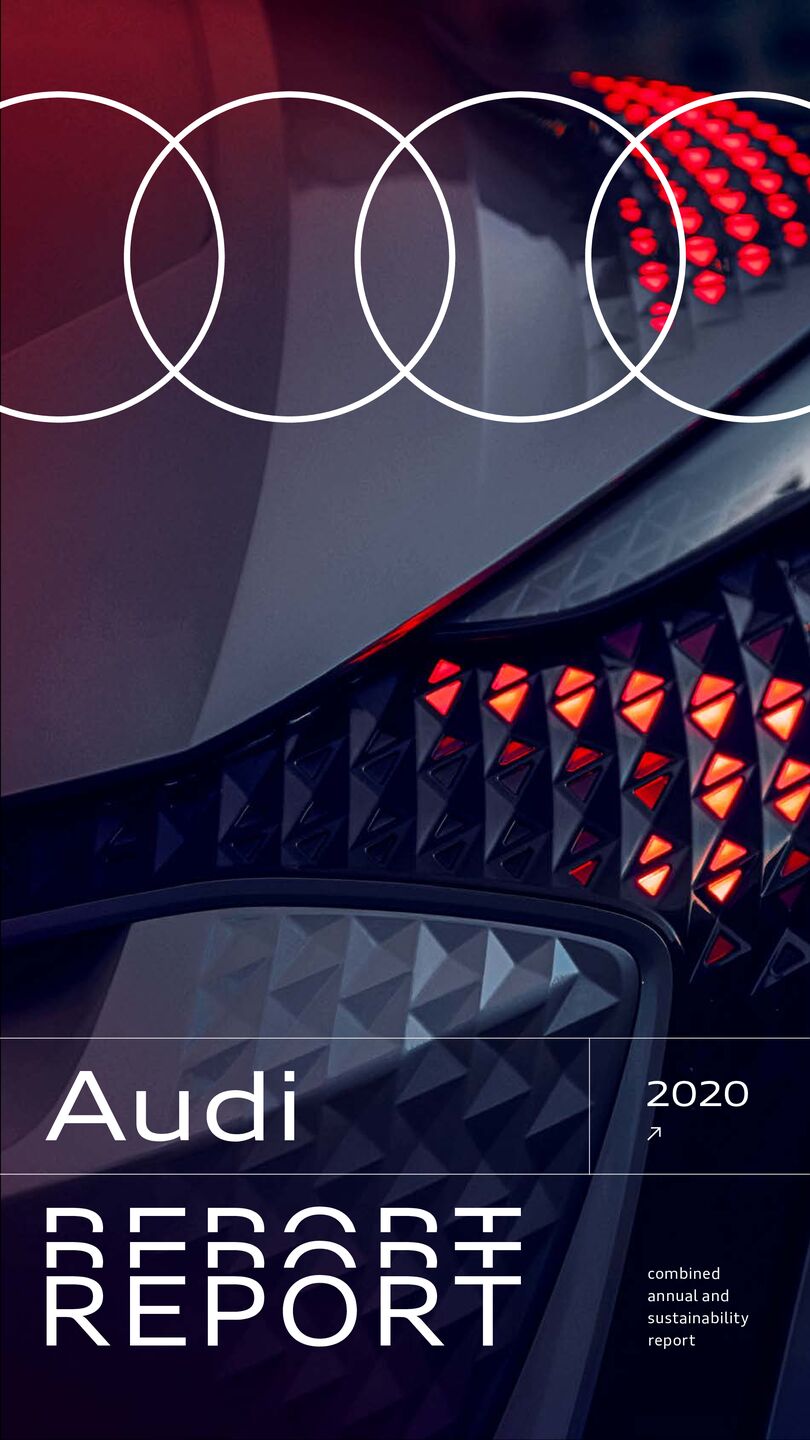 Audi Report 2020
Audi Report 2020
With its latest lighting and sound technologies, Audi is making its mark when it comes to design and safety. In particular, the latest innovations mean Audi has taken a huge leap towards achieving its goal of making mobility in general and cars in specific a whole lot more comfortable. Text: Manfred Dittenhofer Audi Report 2020 169 Products & Services Cesar Muntada, Stephan Berlitz and Dr. Werner Thomas have one thing in common: They all work in the field of lighting at Audi. Their key place of work is 120 meters long and completely dark – the drivable underground light testing tunnel in the Audi Lighting Assistance Center at Technical Development. This is where the latest headlight and rear light technologies are developed and tested. Audi and lighting – the benchmark in the automotive industry. digitally breaking through the dark AUDI LIGHTING – P h o to : A U D I A G Audi e-tron Sportback 55 quattro: combined electric power consumption in kWh/100 km: 24.0–21.6 (NEDC); combined CO₂ emissions in g/km: 0 Audi Report 2020 170 Cesar Muntada, Head of Lighting Design at Audi Products & Services P h o to : A U D I A G The headlights and rear lights are among the most striking design features of a car. “Light becomes the visible expression of ‘Vorsprung durch Technik.’ We use it to give a car an unmistakable face and to sharpen the character of model and brand alike,” explains Cesar Muntada, Head of Lighting Design at Audi. Audi has brought a succession of trailblazing developments in lighting technology onto the market in recent years. One example is the digital matrix LED headlight that was first unveiled on the Audi e-tron Sportback1 in 2019. The right light at the right moment Headlights fitted with this DMD (Digital Micromirror Device) technology have a small chip with about one million micromirrors that can be tilted up to 5,000 times per second with the help of electrostatic fields.
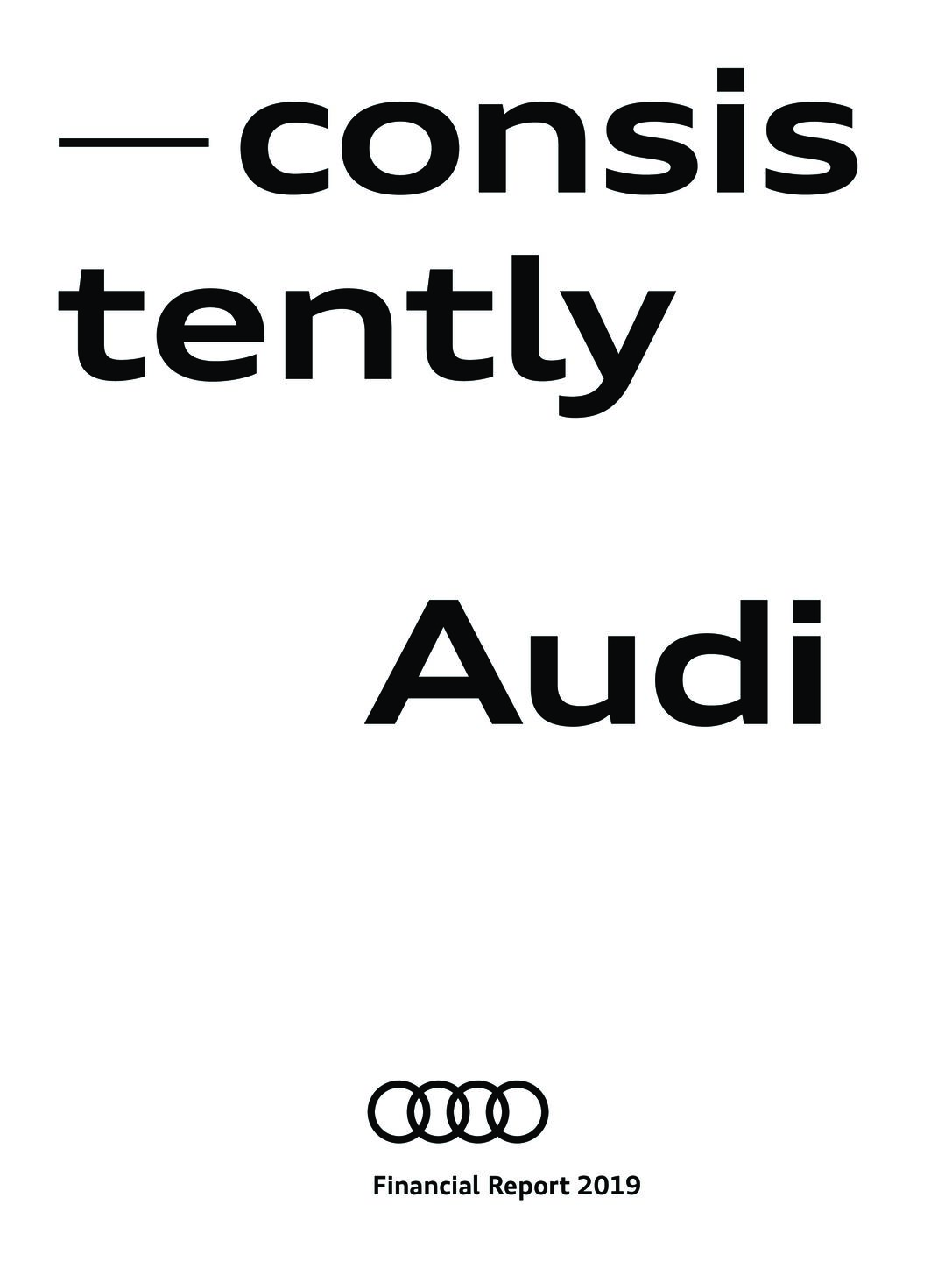 Financial Report 2019
Financial Report 2019
From January through December 2019, the U.S. market for passenger cars and light commercial vehicles, the largest passenger car market in North America, saw 17.0 (17.3) million units newly registered – equivalent to a rate of change of –1.6 percent. Demand continued to shift towards light trucks such as SUV and pick-up models, while the classic passenger car segments contracted. In Brazil, South America’s largest market for passenger cars and light commercial vehicles, the previous year’s volume was increased by 7.7 percent to 2.7 (2.5) million units. In the Asia-Pacific region, the car market contracted substantially by –6.0 percent to 34.0 (36.2) million units in the period under review. The –6.4 percent drop in demand in China, the world’s biggest car market, to 21.3 (22.8) million units was the main reason. The ongoing trade dispute between China and the United States in particular made Chinese consumers reluctant to spend. The Japanese car market likewise showed a negative development compared with the prior-year period. Sales of cars were down –2.4 percent on the previous year, at 4.3 (4.4) million units. / INTERNATIONAL MOTORCYCLE MARKET In 2019, worldwide registrations of new motorcycles in the displacement segment above 500 cc increased by 1.4 percent. The individual markets presented a mixed picture. While the motorcycle market in Western Europe achieved 6.5 percent growth, the number of newly registered motorcycles in the United States – the world’s largest motorcycle market – declined by –6.5 percent. / MANAGEMENT’S OVERALL ASSESSMENT // COURSE OF BUSINESS In the 2019 fiscal year, the Audi Group took further strategic decisions on the future direction of the Company, while business operations were impacted by a large number of challenges on car markets worldwide. One area of focus in the year under review was the introduction of our new “consistently Audi” strategy.